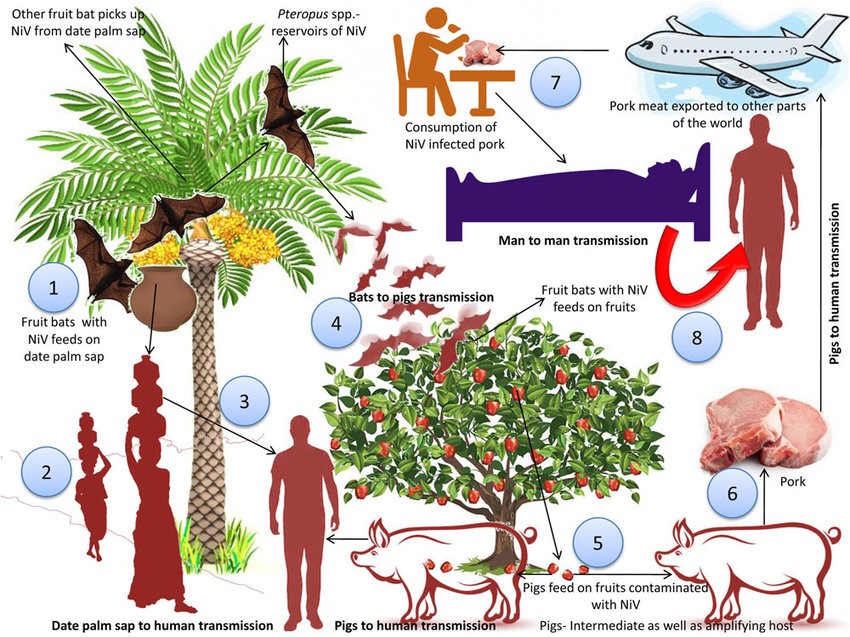Nipah Virus

Disclaimer: Copyright infringement not intended.
Context:
- Kerala has reported a fatality from a case of infection by the Nipah virus in the northern district of Kozhikode.
- It’s the high mortality associated with the virus that triggered panic across the State and the country.
What do we know about Nipah virus outbreaks?
- The human Nipah virus, as it is called, is classified as an “emerging zoonotic disease”, meaning that it can transfer to people after being incubated in other species.
- It was first recognised in a large outbreak of 276 cases in Malaysia and Singapore from September 1998-1999.
- Prior to the Kerala outbreak of 2018, there have been several Nipah virus outbreaks in Bangladesh with spillovers into India particularly in 2001 and 2007 at Siliguri and Nadia in West Bengal.
How does the Nipah virus originate and spread?
- Nipah virus (NiV) is classified as a “highly pathogenic paramyxovirus” and handling the virus requires the highest grade of facilities called BS-4.
- The natural reservoir for the virus are large fruit bats of Pteropus genus.
- From here the virus may pass on to pigs, who may be infected after eating fruits that are bitten on by infected bats.
- The virus takes from 6-21 days to incubate and manifest as disease.
- Drinking of raw date palm sap contaminated with NiV and close physical contact with Nipah-infected patients are believed to be the two main modes of spread.
- The person-to person transmission may occur from close physical contact, especially by contact with body fluids.
What are the symptoms of the disease and how is it diagnosed?
- Fever, delirium, severe weakness, headache, respiratory distress, cough, vomiting, muscle pain, convulsion, diarrhoea are the main associated symptoms.
- In infected people, Nipah virus causes severe illness characterised by inflammation of the brain (encephalitis) or respiratory diseases, which is why it is associated with a high fatality rate.
- Because of the lethality of the virus, very few labs such as the Pune-based National Institute of Virology are equipped to confirm it by isolating the virus.
- Antibody tests that detect the presence of antibodies in the serum of cerebrospinal fluid can be used to detect infection or the RNA of the virus can be detected from respiratory secretions, urine or cerebrospinal fluid.

What treatment exists?
- Currently there is no known treatment or vaccine available for either people or animals.
- The thrust of treatment relies on managing symptoms.
- There are immunotherapeutic treatments (monoclonal antibody therapies) that are currently under development and evaluation for treatment of NiV infections.
- The antiviral treatment remdesivir has been effective in nonhuman primates when given as post-exposure prophylaxis.
https://www.thehindu.com/sci-tech/health/explained-nipah-a-highly-pathogenic-paramyxovirus-and-handling-it-requires-the-highest-grade-facilities/article36318910.ece?homepage=true



1.png)
